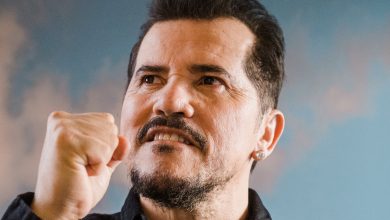On Fat and Free Will

In the girl’s home in Hertfordshire, England, you need a key code to enter the kitchen, where all the cupboards are under bolt and chain, and the garbage bin is locked shut. Without these measures, the child — whose name cannot be published because she’s currently in foster care — wouldn’t be able to stop eating, even scraps of raw meat or leftover pasta wasting away in the garbage.
“She is constantly alert to any possibility of gaining access to food,” her foster father told me, like a calorie-seeking missile. Her brain doesn’t register that she’s eaten. So she lives with a constant, raging hunger, an all-encompassing obsession about her next meal or snack, one that distracts from her other interests — in dolls, horse riding and drawing.
Age 12, the girl is thin, birdlike. If her foster parents didn’t police her every morsel, she’d be much larger, like many people who share her disorder, Prader-Willi syndrome. Patients with Prader-Willi can eat so much that in extreme cases, their stomachs burst open, causing death.
The disorder is a rare and devastating genetic cause of obesity. But it also exists on the far end of a spectrum of eating behavior common to us all, as I was told recently by Tony Goldstone, an Imperial College London endocrinology researcher and physician who works with patients with Prader-Willi. “People think they only eat because they want to eat, or they’re cognitively deciding to eat,” Dr. Goldstone said. “But much of it is not taking place at that conscious level.”
We tend to believe body size is something we can fully control, that we’re skinny or fat because of deliberate choices we make. After talking to hundreds of patients with obesity over the years, and clinicians and researchers who study the disease, let me assure you: Reality looks a lot less like free will. The advent of new and effective obesity drugs offers a stark illustration of this little-appreciated fact of physiology. The debates the medicines prompted also show how little we appreciate about obesity.
Biological systems, influenced by our environments and our genes, control the flow of energy through us: Energy goes into us in the form of food, and is used up or is stored in our bodies, primarily as fat. These systems, stemming from interactions between the brain and body, are in large part involuntary. They tick along, like our reproductive drive or the mechanisms that steady our body temperatures.
The Hertfordshire child with Prader-Willi “has an abnormality in the energy balance thermostat in her brain and she’s not responding,” Dr. Goldstone said. But she’s experiencing just a variation on the kinds of hunger and satiety signals we all live with.
It’s relatively easy to comprehend that our environment influences our eating behavior, and how much weight we gain. “Living next to a farmers market or in a food desert will have a far greater influence on whether a person makes healthy food choices than how much self-discipline they have,” Dan Brierley, a University College London neuroscientist studying obesity, told me. Many of us now live in places overflowing with cheap, ultra-processed calories, which may help explain soaring obesity rates.
But not everyone has obesity today. That’s because how we respond to our environment is also subject to internal controls — invisible nudges guiding us at every meal. Researchers observed this more than 100 years ago, and only recently began to truly unpack how these systems work. The new class of diabetes and obesity drugs — such as semaglutide (sold under the brand names Ozempic and Wegovy) and tirzepatide (Mounjaro) — evolved from that research.
The cascade of discoveries leading to these injectable medications, considered the most effective ever approved for obesity, can be traced back to 1840, when doctors started sharing case studies of patients who, for reasons that seemed outside of their conscious control, overate to the point of severe obesity. On further examination, many had tumors in their brains. The tumors impinged on their physiology in mysterious ways that changed what and how much they ate.
Animal studies that followed hinted at a new understanding of what was going on: Body weight and eating behavior were regulated, not the product of conscious control alone, and the brain somehow orchestrated the process.
Genes also appeared to play a role. Scientists had long observed that obesity ran in families, but it wasn’t clear how much heredity or the environment explained that. A famous 1990 study of identical twins born in Sweden showed that pairs who were separated at birth and adopted had weights more similar to each other than to their adoptive families.
In the mid-1990s, scientists peered inside this complex machinery, to see at the molecular level how brains and genes shape appetite and weight. Early studies in mice revealed that the rodents produce a “factor” which sends a signal to the brain about how much body fat they had stored on them. Some mice with obesity lacked that factor and couldn’t stop eating. Researchers at the Rockefeller Institution in New York identified the factor in 1994: it was a hormone, which they named “leptin,” coded by a gene known as LEP.
Later, Cambridge University researchers discovered leptin’s role in humans, after finding patients with extreme forms of childhood obesity, caused by LEP mutations. Just as in mice, leptin is produced by body fat, and transported into the bloodstream, where it circulates to the brain. There it sends a message about how much energy is stored on the body in the form of fat. When leptin levels drop, or people have genetic abnormalities that don’t allow them to produce leptin or register leptin’s signal, the brain reads that there’s not enough fat on the body; people get hungry and eat more.
While leptin regulates energy balance over time horizons like weeks, there are many other signals that drive our nutritional choices from meal to meal (just as there are now more than a thousand known gene variants implicated in obesity). One well-known player is the hormone glucagon-like peptide-1, or GLP-1, which Wegovy and Ozempic mimic. Primarily produced by the gut, it tells the brain when we’ve had enough to eat.
The ability to sense such fullness — and hunger — varies, the result of genetic differences in brain circuits that control appetite. This manifests in a range of experiences, from people with Prader-Willi to that annoying friend who forgets to eat and is effortlessly skinny all his life (and therefore, perhaps can’t understand why anybody struggles with weight).
The new drugs are the first to manipulate the hormonal regulatory systems governing energy balance. The drugs simulate the action of our native GLP-1 but with longer-lasting effects, amplifying the fullness signal inside the body. People who struggle to feel sated suddenly don’t, effectively giving “someone the ‘will power’ of those lucky enough to have won the genetic lottery,” said Dr. Brierley.
Many people who have taken the medicines for obesity described to me how their experience of hunger had fundamentally changed. Patricia McEwan, who has injected Ozempic for nine months, said she planned to stay on the drug for life because it “shut off the intrusive constant thoughts about food” that had consumed too much of her mental space since childhood. Before Ozempic, Ms. McEwan thought her overeating was driven by her emotions and lack of will power. After Ozempic, she understood that how she responded to food was the product of her physiology.
There are open questions about how GLP-1-based drugs will work long term in individual patients, and what impact, if any, they’ll have on the surging global obesity rate. The data we have suggests people’s weight loss can plateau after a while, side effects are common, as is weight regain when patients go off the medicines.
There have been many reports about insurance hurdles or supply shortages that interrupt or block people’s access to obesity drugs in the United States, and it’s unclear how low-income people will get access to them. Meanwhile, the energy balance model of appetite regulation is being complicated by evidence that we have other kinds of nutrient appetites — for protein, for example — and there’s very little understanding of how the medicines will affect these.
At the very least, though, the way the drugs work can teach us that people who are larger did not necessarily choose to be, just as people who are smaller did not — and are not morally superior. This “isn’t a free pass, either to individuals who do have the capacity to choose better, nor does it take the heat off of food industries,” said a University of Sydney nutritional biologist, Stephen Simpson, but it’s “evidence that obesity isn’t a personal lifestyle choice.”
Learning about this science helped me see my own weight changes in a new light. When I became pregnant with my second child, I very quickly developed a voracious appetite. I felt a pain from hunger I’d never experienced, would obsess about my next snack or meal in ways I don’t usually, and ate quantities I would have found unimaginable (even unbearable) a few weeks prior. I also gained weight rapidly.
Suddenly in my second trimester, the increased appetite, and the weight gain, eased. But the preoccupation with food I’d just experienced recalled my earlier years, when I struggled with obesity. Now, I could see the changes were not the result of a sudden shortage in will power. My brain was telling my body to get more energy to support the growing fetus.
How women’s brains and bodies manage this during pregnancy and breastfeeding is still mysterious, a phenomenon that’s also been observed in lactating mice who tend to eat three times their usual calories. Some people with obesity are plagued by the kind of hunger I had in pregnancy all the time. It’s also not their choice.
Julia Belluz, a health journalist, is writing a book about nutrition and metabolism.
The Times is committed to publishing a diversity of letters to the editor. We’d like to hear what you think about this or any of our articles. Here are some tips. And here’s our email: [email protected].
Follow The New York Times Opinion section on Facebook, Twitter (@NYTopinion) and Instagram.





